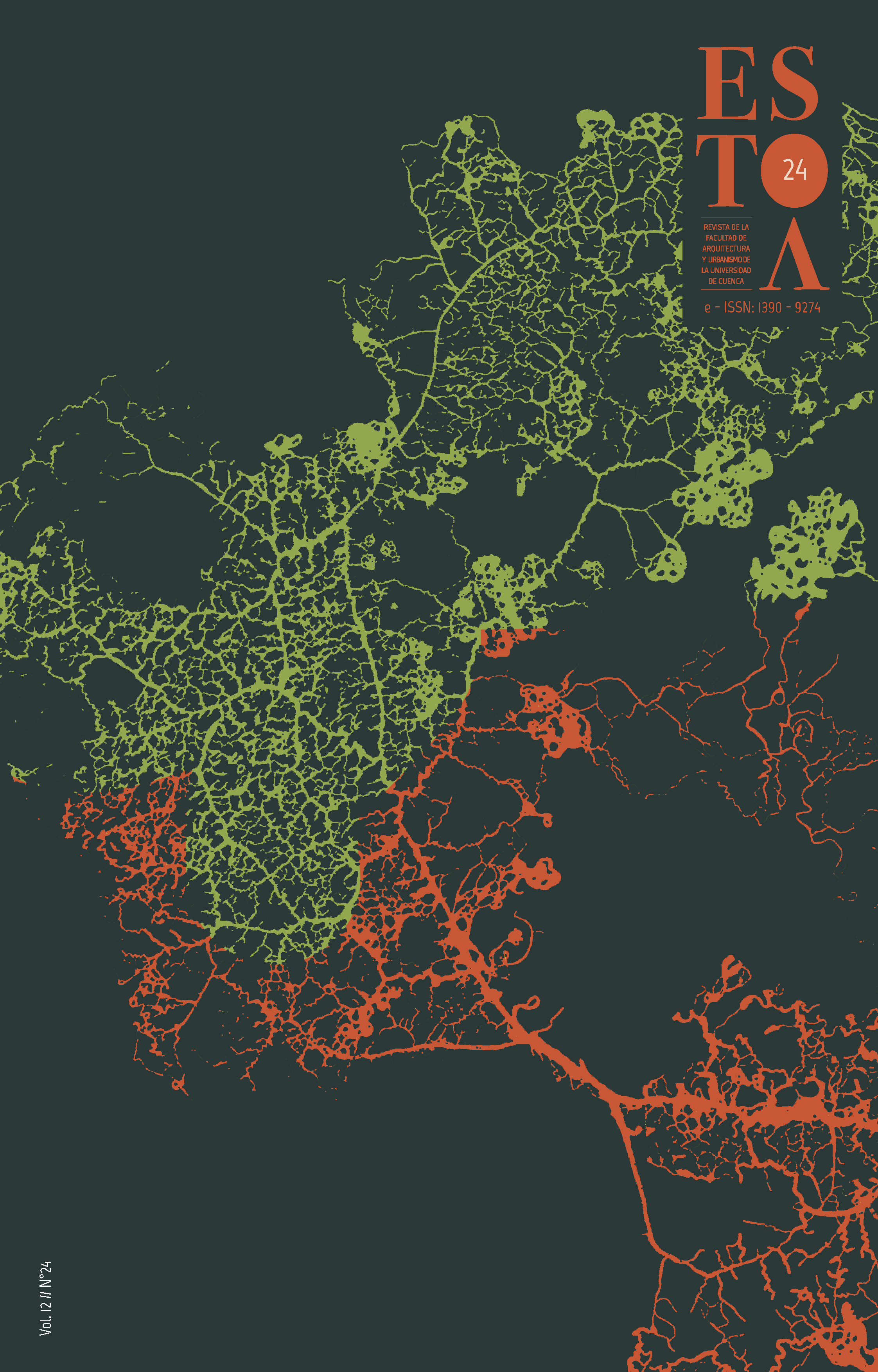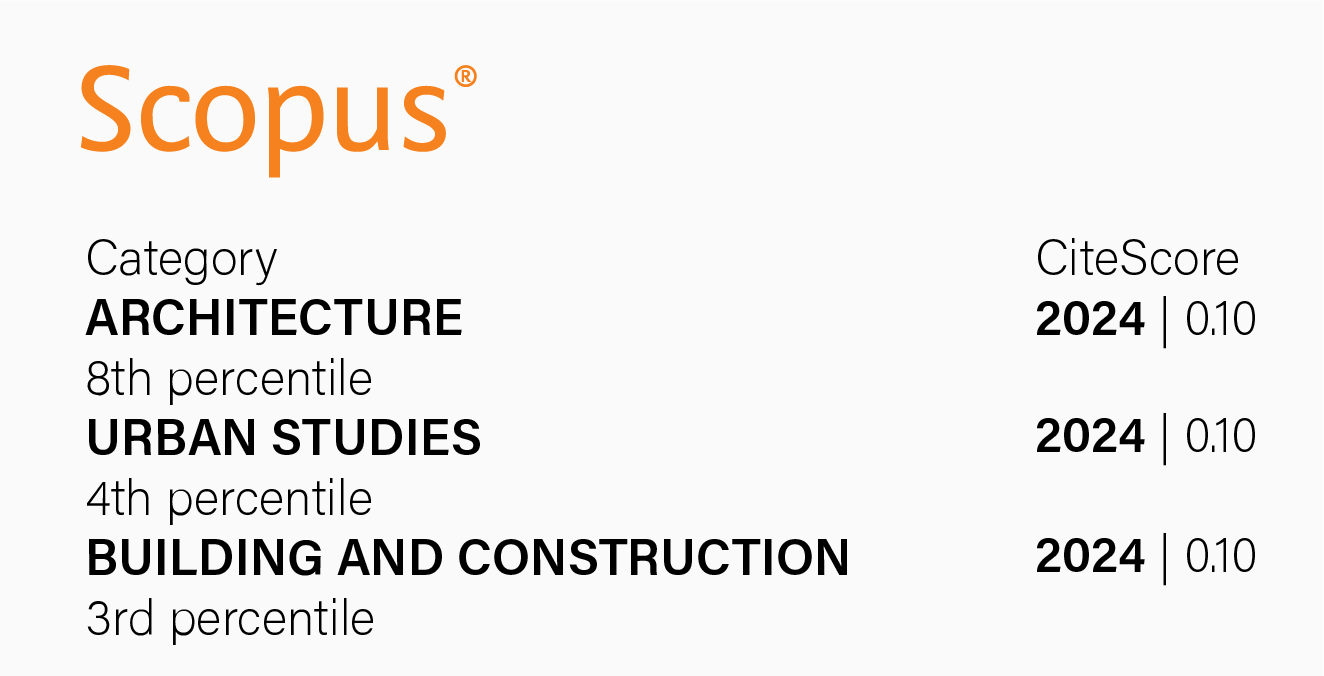An Analysis of Student and Expert Perspectives on Creativity Assessment in Architectural Design Computing
DOI:
https://doi.org/10.18537/est.v012.n024.a05Keywords:
architecture education, computational design pedagogy, peer review, creativity assessment, creativity researchAbstract
The aim of this study is to investigate potential differences in how students and experts assess creativity in the context of computational design. With this aim, a teaching experiment was conducted in a master level course, namely Digital Architectural Design and Modelling (DADM). A hybrid methodology on the basis of qualitative and quantitative research techniques was employed. Data were obtained from an open-ended question and a structured online questionnaire. The questionnaire results were evaluated utilizing Statistical Package for Social Sciences (SPSS) software. To evaluate responses of the open-ended question, a three-fold conceptual framework comprising contextualization, actualization, and representation (CAR) was developed based on literature review of the assessment of creativity in architecture, architecture education, and computational design. The results of the comparison between the way students and experts assess creativity provided significant differences. In some criteria, involving quantitative analysis results showing similarity between students and experts in the context of creativity assessment, the developed CAR lenses have potential to reveal structural differences in the way the respondents approach creativity.
Downloads
References
Asanowicz, A. (1989). Four Easy Questions. Proceedings of the 1989 eCAADe Conference (pp. 9.18.1–9.18.4). CumInCAD. https://doi.org/10.52842/conf.ecaade.1989.x.x8v
Barkow, F., & Leibinger, R. (2012). Designing assembly: how tools shape materials that constitute space. In: S. Marble (Ed.), Digital Workflows in Architecture (pp. 94–107). Birkhäuser.
Benjamin, D. (2012). Beyond Efficiency. In: S. Marble (Ed.), Digital Workflows in Architecture (pp. 14–25). Birkhäuser.
Benner, J., & McArthur, J. J. (2019). Lessons Learned from a Multi-year Initiative to Integrate Data-Driven Design Using BIM into Undergraduate Architectural Education. In: I. Mutis & T. Hartmann (Eds.), Advances in Informatics and Computing in Civil and Construction Engineering (pp. 857–864). Springer.
Botella, M., Zenasni, F., & Lubart, T. I. (2011). A dynamic and ecological approach to the artistic creative process in arts students: An empirical contribution. Empirical Studies of the Arts, 29(1), 17–38. https://doi.org/10.2190/EM.29.1.b
Botella, M., Zenasni, F., & Lubart, T. (2018). What are the stages of the creative process? What visual art students are saying. Frontiers in Psychology, 9, 2266. https://doi.org/10.3389/fpsyg.2018.02266
Brown, D. C. (2015). Computational Design Creativity Evaluation. In: J. Gero & S. Hanna (Eds.), Design Computing and Cognition ‘14 (pp. 207–224). Springer.
Brown, D. C. (2019). Initial thoughts on comparing computational design creativity systems. International Journal of Design Creativity and Innovation, 7(1-2), 3–15.
Casakin, H., & Kreitler, S. (2008). Correspondences and divergences between teachers and students in the evaluation of design creativity in the design studio. Environment and Planning B: Planning and Design, 35(4), 666–678.
Cross, N. (1997). Creativity in design: analyzing and modeling the creative leap. Leonardo, 30(4), 311–317.
Cross, N. (2002). Creative cognition in design: Processes of exceptional designers. In: T. T. Hewitt & T. Kavanaugh (Eds.), Creativity and Cognition (pp. 14–19). ACM Press.
Csikszentmihalyi, M. (1997). Creativity: Flow and the psychology of discovery and invention. Harper-Collins.
Demirkan, H., & Hasirci, D. (2009). Hidden dimensions of creativity elements in design process. Creativity Research Journal, 21(2-3), 294–301.
Doheim, R. M., & Yusof, N. (2020). Creativity in architecture design studio. Assessing students’ and instructors’ perception. Journal of Cleaner Production, 249, 119418.
Dorst, K. (1997). Describing design: a comparison of paradigms [Doctoral dissertation, Technische Universiteit Delft].
Duarte, J. P., Celani, G., & Pupo, R. (2012). Inserting Computational Technologies in Architectural Curricula. In: N. Gu & X. Wang (Eds.), Computational Design Methods and Technologies: Applications in CAD, CAM and CAE Education (pp. 390–411). IGI Global.
Feldhusen, J. F., & Goh, B. E. (1995). Assessing and accessing creativity: An integrative review of theory, research, and development. Creativity Research Journal, 8(3), 231–247.
Fleith, D. S. (2000). Teacher and Student Perceptions Of Creativity In The Classroom Environment, Roeper Review, 22(3), 148–153.
Folch, T. M., Pereira, R. C., & Icart, I. B. (2019). Exploring the creative process in architecture students and professionals. Thinking Skills and Creativity, 34, 100608.
Fricker, P., Kotnik, T., & Borg, K. (2020). Computational Design Pedagogy for the Cognitive Age. Proceedings of the 38th eCAADe Conference - Volume 1 (pp. 685–692). CumInCAD. https://doi.org/10.52842/conf.ecaade.2020.1.685
Garvin, W. L. (1964). Creativity and the Design Process. Journal of Architectural Education, 19(1), 3–4.
Gero, J. S. (2000). Computational models of innovative and creative design processes. Technological Forecasting and Social Change, 64(2-3), 183–196.
Goldschmidt, G., & Tatsa, D. (2005). How good are good ideas? Correlates of design creativity. Design Studies, 26(6), 593–611.
Götz, I. L. (1981). On defining creativity. The Journal of Aesthetics and Art Criticism, 39(3), 297–301.
Henriksen, D., Mishra, P., & Fisser, P. (2016). Infusing Creativity and Technology in 21st century education: A systemic view for change. Journal of Educational Technology & Society, 19(3), 27–37.
Horn, D., & Salvendy, G. (2009). Measuring consumer perception of product creativity: Impact on satisfaction and purchasability. Human Factors and Ergonomics in Manufacturing & Service Industries, 19(3), 223–240.
Kalantari, B., Nourtaghani, A., & Farrokhzad, M. (2020). An Educational model of Creativity Enhancement in Design Studios Using Prior Researches. Space Ontology International Journal, 9(3), 15–26.
Kim, M. H., Kim, Y. S., Lee, H. S., & Park, J. A. (2007). An underlying cognitive aspect of design creativity: Limited Commitment Mode control strategy. Design Studies, 28(6), 585–604.
Lawson, B. (1994). Design in mind. Butterworth Architecture Press.
Lee, J. H., Gu, N., & Ostwald, M. J. (2015). Creativity and parametric design? Comparing designer’s cognitive approaches with assessed levels of creativity. International Journal of Design Creativity and Innovation, 3(2), 78–94.
Lucas, B., & Spencer, E. (2017). Teaching Creative Thinking: Developing learners who generate ideas and can think critically (Pedagogy for a Changing World series). Crown House Publishing Limited.
McLaughlin, S. (1993). Emergent value in creative products: some implications for creative processes. In: J. S. Gero & M. L. Maher (Eds.), Modeling Creativity and Knowledge-Based Creative Design (pp. 43–89). Lawrence Erlbaum Associates.
Mitchell, W. J. (1993). A computational view of design creativity. In: J. S. Gero & M. L. Maher (Eds.), Modeling Creativity and Knowledge-Based Creative Design (pp. 25–42). Lawrence Erlbaum Associates.
Onsman, A. (2016). Assessing creativity in a ‘New Generation’ architecture degree. Thinking Skills and Creativity, 19, 210–218.
Oxman, R. (2008). Digital architecture as a challenge for design pedagogy: theory, knowledge, models and medium. Design Studies, 29(2), 99–120.
Patrick, C. (1937). Creative thought in artists. The Journal of Psychology, 4(1), 35–73.
Pittioni, G. (1992). Concepts of CAAD-Instruction. Proceedings of the eCAADe’92 Conference (pp. 363–376). CumInCAD. https://doi.org/10.52842/conf.ecaade.1992.363
Spendlove, D. (2008). Creativity in education: a review. Design and Technology Education: An International Journal, 10(2), 9–18.
Sternberg, R.J., & Williams, W.M. (1996). How to develop student creativity. Association for Supervision and Curriculum Development.
Tabachnick, B. G., & Fidell, L. S. (2014). Using multivariate statistics: International edition. Pearson Education Limited.
Tardif, T. Z., & Stenberg, R. J. (1988). What do we know about creativity? In: R. J. Sternberg (Ed.), The nature of creativity (pp. 429–440). Cambridge University Press.
Van Berkel (2012). Diagrams, Design Models and Mother Models. In: S. Marble (Ed.), Digital Workflows in Architecture (pp. 74–89). Birkhäuser.
Varinlioglu, G., Halici, S. M., & Alacam, S. (2016). Computational Thinking and the Architectural Curriculum-Simple to Complex or Complex to Simple? Proceedings of the 34th eCAADe Conference - Volume 1 (pp. 253–259). CumInCAD. https://doi.org/10.52842/conf.ecaade.2016.1.253
Zagalo, N., & Branco, P. (2015). Creativity in the digital age. Springer.
Downloads
Published
How to Cite
Issue
Section
License
Copyright (c) 2023 Estoa. Revista de la Facultad de Arquitectura y Urbanismo

This work is licensed under a Creative Commons Attribution-NonCommercial-ShareAlike 4.0 International License.
The Journal declines any responsibility for possible conflicts derived from the authorship of the works that are published in it.
The University of Cuenca in Ecuador conserves the patrimonial rights (copyright) of the published works and will favor the reuse of the same ones, these can be: copy, use, diffuse, transmit and expose publicly.
Unless otherwise indicated, all contents of the electronic edition are distributed under a Creative Commons Attribution-NonCommercial-ShareAlike 4.0 International License.




